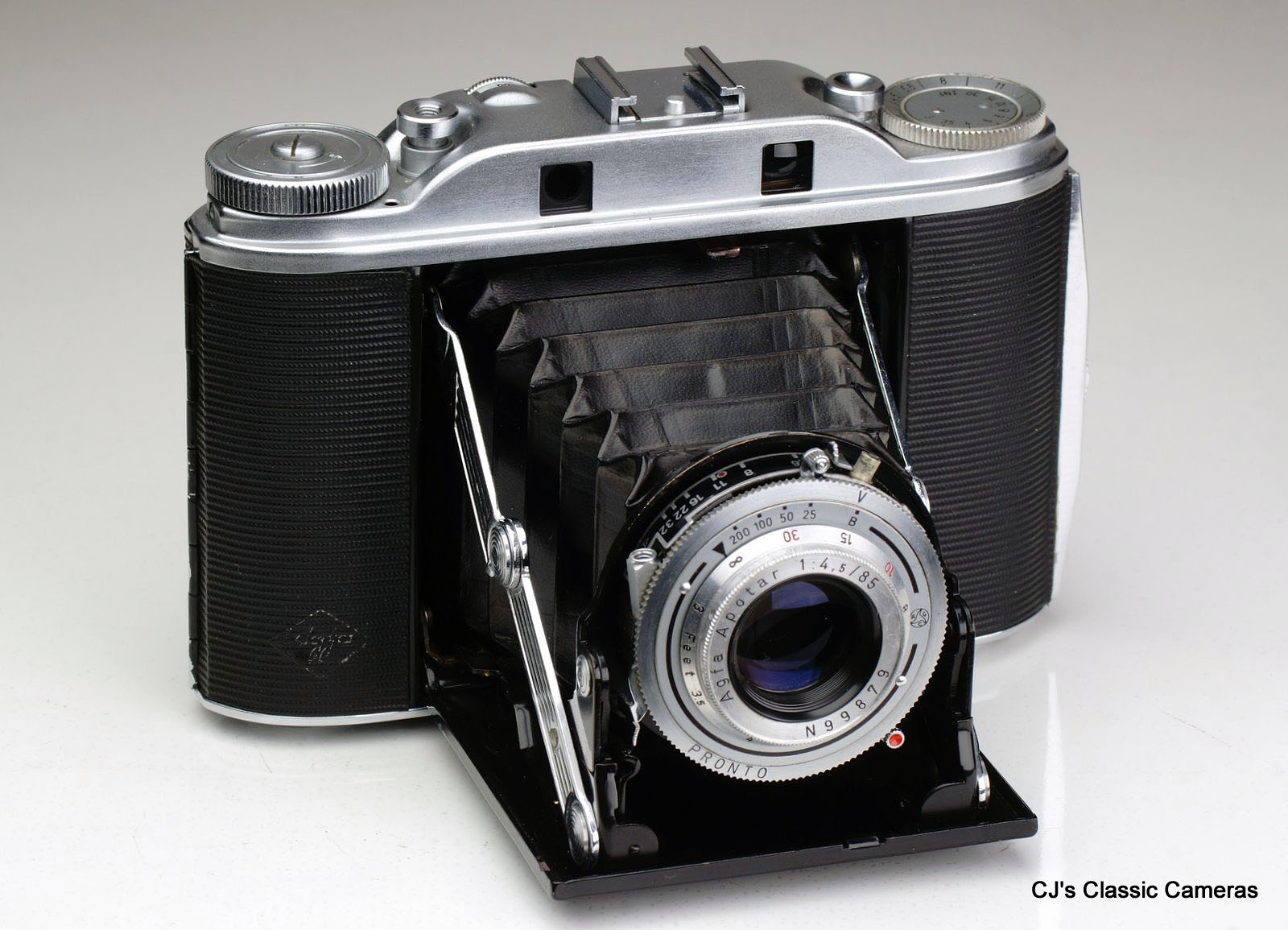

The top plate is pressed brass which is satin plated – the metal has a blueish tint so I think the plating might be nickel but I cannot be sure it is not chrome. The metal is painted with matt black paint with most of the outside being covered with a very plasticky black leatherette with a pronounced ribbed pattern. The body seems to be made from aluminium, apart from the lens door which is steel.

This is an un-coupled rangefinder – the measured distance must be transferred to the focus ring by hand but it is still very useable.

The model III – this one – is distinguished by having a built-in rangefinder. that is not to say that the camera is not well made – it is – nor that it is not capable of producing good photographs – again, it is. The Isolette range is a beginner’s range, really, and the specification is close to basic. I cannot date it precisely but this model was revised a couple of times and my camera is the original version. In 1964, Agfa merged with Gevaert to form Agfa-Gevaert, with Bayer owning 50% of the new company – in 1981, Bayer bought out Gevaert and became the sole owner of Agfa-Gevaert, which continued until 1999 when Agfa -Gevaert became a public company. Agfa was a wholly owned subsidiary of Bayer at this point. It is now a part of the University of Frankfurt). Within the IG Farben conglomerate, Agfa was merged with Bayer.Īfter WWII, IG Farben was demerged back to its constituent businesses (IG Farben still exists as a company but does not produce anything. The same conditions applied to the chemical industries and in December 1925, Agfa, Bayer, BASF, Hoechst and a couple of others merged to form the infamous IG Farben. The most famous of these, photographically, was the mergers that formed Zeiss Ikon in 1926. The dye company branched out into making photographic film in 1898 and later into making cameras.Īfter the First World War, the German economy was in dire straits and many companies merged to survive. Agfa is an acronym for Akliengesellschaft für Aniline which translates into English as Corporation for Aniline Production. Agfa was formed in 1867 to produce the new aniline dyes. Agfa is an old company and has a chequered history. This Agfa Isolette III was made by the German firm of Agfa in the early 1950s.


 0 kommentar(er)
0 kommentar(er)
